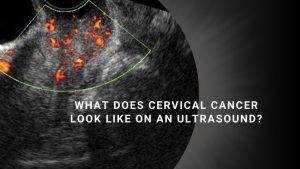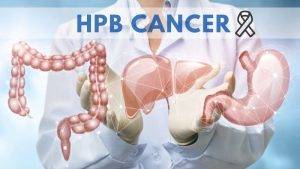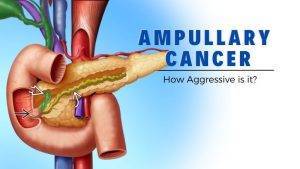
How Defective DNA Repair Fuels the Flames of Cancer
Understand how impairments in DNA repair mechanisms pave the way for mutations, genomic instability, and uncontrolled cell growth.

Understanding Cervical Cancer through Ultrasound Imaging
Gain insights into the role of ultrasound in diagnosis and monitoring of this prevalent form of cancer.

The Time Journey: Navigating Breast Cancer Diagnosis to Surgery
Overview When it comes to surgery for breast cancer, a general guideline suggests that it is ideally performed within a timeframe of 31 to 90 days following the initial diagnosis. This carefully allocated window allows for comprehensive diagnostic testing, informed decision-making, and ensures that the outlook and prognosis are not compromised. In this article, we unravel the intricacies of this path, shedding light on the factors that shape the timeline and offering insights to navigate this transformative period. Thorough Diagnostic Journey After a breast cancer diagnosis, it is crucial to conduct a series of thorough diagnostic tests to gather comprehensive information about the cancer’s characteristics and extent. These tests may include Imaging scans Biopsies Consultations with specialists Allowing sufficient time for this diagnostic journey ensures a comprehensive understanding of the cancer’s stage, grade, and potential for spread, laying the foundation for an effective treatment plan. Treatment Collaboration The decision regarding the timeline of surgery is meticulously crafted, taking into consideration various factors. These factors may include the cancer’s stage, its response to initial treatments like chemotherapy or radiation therapy, the patient’s overall health, and their personal preferences. An open dialogue with the healthcare team allows patients to actively participate in decisions and ensures a personalized treatment journey. Urgency and Expedited Surgeries In certain instances, immediate surgery may be required due to rapidly growing tumors, aggressive forms of breast cancer, or urgent symptom relief. These cases demand swift action to address the cancer’s progression promptly, ensuring the best possible outcomes. The medical team will work closely with the patient to expedite the surgical process, prioritizing their well-being and comfort. Impact of Time to Surgery on Breast Cancer Outcomes The period between breast cancer diagnosis and surgery is crucial for thorough evaluation and preparation. While there is no set standard for the exact timing of surgery following diagnosis, it is important to consider the potential impact of delays on breast cancer outcomes. Medical teams typically conduct preoperative tests to gain a better understanding of the specific characteristics of the cancer. Additionally, scheduling surgery may take some time, as the healthcare system strives to accommodate various factors and prioritize patients’ needs. Research conducted in 2016 involving 94,544 individuals with breast cancer sheds light on the relationship between time to surgery and outcomes. The study divided the time to surgery into five 3-month intervals: Less than 30 days 31 to 60 days 61 to 90 days 91 to 120 days 121 to 180 days The findings revealed that as the interval between diagnosis and surgery increased, overall survival rates decreased. This indicates that longer delays may potentially allow for the growth or progression of the cancer. While preoperative evaluations are vital for optimal surgical planning, the study suggests that, whenever possible, a shorter time to surgery should be pursued to improve outcomes. This emphasizes the importance of prompt action and efficient coordination between the healthcare team and the patient. It is crucial to remember that each case is unique, and the timing of surgery may depend on various factors such as the specific characteristics of the cancer, treatment plan, and individual circumstances. Open and honest communication with the medical team is key to ensuring that the timing of surgery is appropriately balanced with the need for comprehensive evaluation and personalized care. Determining an Optimal Timeframe When considering the impact of time to surgery on breast cancer outcomes, it becomes crucial to identify how long is too long to wait. While the ideal timeframe is subjective and dependent on individual circumstances, there are research findings that provide valuable insights. Conflicting research exists on this topic. For instance, studies conducted in 2017 and 2022 indicate that the outlook for individuals with breast cancer remains unaffected until the time to surgery exceeds 60 days. A comprehensive review conducted in 2018 examined various studies on the time to treatment and its impact on outcomes. The review suggested that a time frame of less than 90 days from diagnosis to surgery was optimal for achieving favorable outlooks. In support of this, a 2020 study focused on the effects of time to the first breast cancer treatment. It concluded that a longer interval of 31 to 90 days for the initial treatment, allowing for thorough diagnostic testing and decision-making, did not compromise overall survival rates. It is important to recognize that individual cases may vary, and the optimal timeframe for surgery may depend on factors such as cancer characteristics, treatment plan, and patient preferences. These research findings serve as general guidelines, highlighting the importance of prompt action and minimizing delays while ensuring comprehensive preoperative assessments and informed decision-making. Primary Goal The primary goal of surgery for breast cancer is twofold: To remove the tumor To prevent the cancer from recurring The recommended type of surgery depends on various factors such as the type and genetic profile of the breast cancer, the extent and aggressiveness of the cancer, biomarker presence, your medical history, and personal preference. There are two general types of breast cancer surgery: Breast-conserving surgery (BCS): This procedure involves removing the tumor along with some surrounding breast tissue while preserving the remaining breast tissue. BCS is often followed by radiation therapy. Mastectomy: A mastectomy involves removing the entire breast, sometimes including surrounding tissues. Following surgery, additional breast cancer treatments, known as adjuvant therapy, may be recommended to eliminate any remaining cancer cells and reduce the risk of recurrence. Adjuvant therapy can include radiation therapy chemotherapy hormone therapy targeted therapy immunotherapy It’s worth noting that in some cases, one or more of these treatments may be administered before surgery to shrink the tumor. This is referred to as neoadjuvant therapy. Overall, the goal of breast cancer surgery is to remove the tumor, minimize the risk of recurrence, and optimize long-term outcomes. The specific approach and treatment plan are tailored to each individual’s unique circumstances and preferences. Other factors That Affect Treatment Outcomes Treatment outcomes in breast cancer are influenced by various factors beyond the timing of surgery. These factors

HPB Oncology: Understanding and Treating Hepatopancreatobiliary Cancers
Learn the significance of HPB oncology as a subspecialty in the management of liver and pancreatic cancers.

How Aggressive is Ampullary Cancer
Explore the aggressiveness of ampullary cancer in this comprehensive article, covering everything from its symptoms, causes, and risk factors to diagnostic procedures.

How to Respond When Someone Has Cancer
Discover ways to assist in prioritizing what a person with cancer want to do and delegating other tasks, creating a balance between the necessities of their treatment and the enjoyment of their everyday life.
